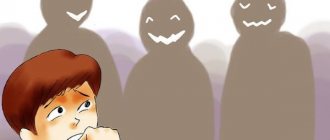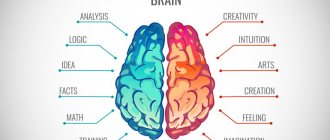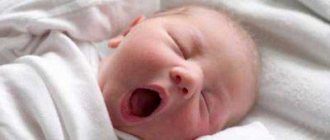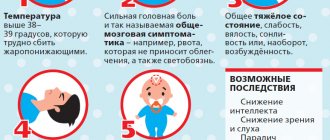Possible symptoms of a concussion
- Brief confusion or loss of consciousness. With a strong blow, the moment of injury disappears from memory.
- Dizziness even at rest, and when turning, bending or other changes in body position, the symptom intensifies.
- Severe headache, nausea and vomiting.
- Double vision, inability to concentrate on one point.
- Increased sensitivity to light and sounds.
- Impaired coordination of movements.
- Reaction inhibition - the victim gives an answer to the question after some time.
- Pale skin, weakness, sweating.
Important! A concussion is not always accompanied by visible head injuries, so the absence of wounds does not exclude brain injury.
First aid
After a head impact, signs of TBI appear quickly. The main thing is to be careful. The most striking symptoms: vomiting, nausea, fainting. It is very important not to get lost, to act confidently and quickly:
- Call the doctors.
- Apply something cold to your head (ice, compress). This will help narrow the blood vessels, minimize the risk of hematomas, hemorrhages, lumps, and prevent or reduce swelling.
- Carefully examine the victim. Sharp pain in the neck may indicate damage to the vertebrae. It is important to fix the position and not change it until the ambulance arrives.
- In case of fainting, bring ammonia to your nose. Wipe with cool water. It is strictly forbidden to hit people on the cheeks. Such an action will increase the consequences of damage.
- Treat wounds. The use of chlorhexidine and hydrogen peroxide is allowed.
- If heavy bleeding begins in the temple area (spouts like a fountain), pinch the vessel with your fingers. After this, apply a bandage with furatsilin or miramistin. After attaching the bandage with a bandage, wrap your head with a bandage.
- If vomiting occurs, place the person on their side. This is necessary for the random flow of vomit so that the victim does not choke. It is advisable to place a clean cloth and change it periodically when it gets dirty.
Having done everything necessary, you need to wait for the doctors. If a person has not lost consciousness and feels more or less normal, you can not call an ambulance, but take him to the hospital yourself. The main thing to remember is that the consequences of TBI can be quite serious. Only a doctor can assess the condition, so a visit to the clinic should not be neglected.
First aid for concussion
- If one or more symptoms are present, immediately call an ambulance or take the victim to a doctor.
- Treat a wound on the head if it appears as a result of an impact.
- For an hour or until the doctor arrives, it is important not to fall asleep, but to remain at rest.
- If you lose consciousness, lay the person on his side, bend his knees, and put his hands under his head.
- If symptoms of a concussion do not immediately appear, it is recommended to rest and not begin vigorous activity.
Peculiarities of manifestation of traumatic brain injuries in children
In babies under one year of age, there is a sharp increase in temperature to 38°C and above. This reaction is associated with:
- wound infection;
- inflammation;
- suffered stress;
- inappropriate use of medications.
The child is not able to clearly describe his feelings, so it is quite difficult to make a diagnosis. There is a risk of underestimating the severity of the injury. Warning signs in this case are:
- pale skin;
- lethargy, drowsiness;
- increased heart rate.
Over time, vomiting, regurgitation, tearfulness, and capricious behavior appear. The baby sleeps restlessly and often gets up at night. If it is SHM, then the symptoms go away within a week.
Please note that infants and the elderly do not experience fainting during SHM.
Recommendations for the treatment of concussions
If hospitalization is not required, with the permission of a doctor, a mild concussion can be treated at home:
- Bed rest and rest are required, no work. Long sleep is very important.
- You cannot read, watch TV, play computer games or use gadgets.
- Under no circumstances should you play sports.
- You are allowed to listen to music, but not through headphones.
- You can use herbal sedative drops or herbal infusions.
- In your diet, you should give preference to dairy and plant products, limit salt intake - to prevent increased pressure, including intracranial pressure.
If the patient seeks medical help in a timely manner and all recommendations are followed, recovery will occur quickly and without complications.
Diagnosis of TBI
Even if you provided first aid, know how to treat, and have previously encountered similar injuries, do not be arrogant. Examination of the victim by a qualified physician is mandatory. If you don’t want to call an ambulance, take him to the clinic yourself. Just before doing this, make sure that the spine is damaged and the skull bones are not cracked.
The most accurate conclusion can be made using magnetic resonance therapy and computed tomography of the head. The procedures are painless. With their help, you can thoroughly study the structure of the brain, look for the presence of hemorrhages, hematomas, etc.
If it is not possible to do MRI and CT (the clinic does not have machines), diagnostics should include:
- X-ray of the skull.
- Encephalography of the head.
- Examination by an ophthalmologist.
Encephalography will also help detect hemorrhage. In this case, hospitalization cannot be avoided.
If, after an injury, the patient has liquor leaking from the ears or bruises under the eyes in the form of glasses, you should consult a doctor immediately. Self-medication or lack of help, in this case, often leads to death.
You can undergo an MRI or CT scan in Moscow at any time of the day and regardless of the day of the week. You can find a clinic with 24-hour service, close to the patient, using the service: https://msk-mrt.ru/articles/. There are hundreds of medical centers operating in different modes here. Within a few minutes you can find a clinic and make an appointment by phone. Registration through the website allows you to get a discount on the examination.
Brain contusion
A brain contusion is damage to an area of the brain due to an impact. This injury is more serious than a concussion and may cause bleeding or swelling. Usually, with a brain injury, a person loses consciousness. The consequences can range from minor to very severe. Moreover, it can be difficult to make a forecast right away.
In case of brain contusion, the same rules of diagnosis and treatment apply as in general for moderate and severe traumatic brain injuries.
It is important to remember that if you hit your head and it takes you some time (even a short time) to come to your senses, you need to see a doctor. The doctor will find out whether it is just a concussion or something more serious.
At the Yusupov Hospital you can get help for concussions and undergo rehabilitation for more severe traumatic brain injuries. Our doctors can not only conduct a competent diagnosis of the condition, but also help even in the most severe cases.
Causes
Based on the time of appearance, doctors distinguish between congenital and acquired pathologies. The first appears immediately after birth, and the second occurs under the influence of negative factors at any age.
Causes of torticollis in infants:
Neck muscle pain
- Underdevelopment of the mastoid (sternocleidomastoid) muscle. Problems with the muscle can arise due to malnutrition of the tissues of the neck, incorrect position of the fetus (for example, breech presentation), entanglement in the umbilical cord, and injuries during difficult childbirth.
- Congenital fusion and change in the shape of the cervical vertebrae or cervical ribs.
- Cervical vertebrae injuries.
- Destruction of the vertebrae due to tuberculosis, osteomyelitis (purulent-necrotic process in the bone), and oncological diseases.
- Spasm or paralysis of the neck muscles caused by polio, encephalitis, central nervous system tumors, etc.
- Oxygen starvation or intrauterine infection.
- Pterygoid neck (lateral folds of skin on the neck).
- Scars on the skin after burns, injuries, inflammation of the lymph nodes, etc.
- Diseases of the visual organs, for example, strabismus, astigmatism.
- Pathologies of the inner ear.
- Incorrect positioning and carrying of infants with the head turned to one side, placing toys on one side.
Reference. The easiest to treat is positional torticollis, caused by improper parental care.
How to fix torticollis
The very first problems of a newborn always cause great concern among his parents and force them to immediately seek help from pediatricians. And it’s not surprising, because everything in a baby’s life happens for the first time! But in fact, many of the characteristic infant problems can be eliminated even without the use of medications. Teachers working with young children are well aware of this.
Parents often turn to specialists with the question of what to do if the baby has a predominant head turn to one side. In a number of such cases, doctors may prescribe wearing a special device - a Shants collar, which will fix the baby's head in the center. It is important to know: such a collar can be recommended for spastic torticollis, when it is very difficult to turn the baby’s head, the spasticity is so great. However, with habitual torticollis (that is, when the position of the child’s head can be easily changed), wearing a Chance collar is not always justified. For children with reduced muscle tone, which is observed with Down syndrome, wearing such a collar is completely contraindicated, except in cases where, in addition to the usual torticollis, there are additional indications. By putting a collar on your child, you disable the neck muscles, which are already weak, from working. This may cause the child to have difficulty holding his head up. So, without getting rid of one problem, you can acquire another - impaired control of head position.
You can get rid of habitual torticollis in simple ways. It should be understood that it is important to achieve the ability not only to keep your head in the center, but also to freely and purposefully turn and tilt it.
What to do to eliminate preferential head rotation?
Baby lies in a crib
Check how the child's bed is positioned. Perhaps the child must always turn in the same direction to see you.
Reposition your baby, changing the head of the bed several times a day.
Try to approach from a “rare” turn, call the child, and wait for his reaction.
Check how the toys hang, hang them on the side where the baby turns less often.
Place contrasting black and white or yellow and blue pictures on the wall of the crib on the desired side.
While awake, the child can spend part of the time on an orthopedic pillow - this is a small hard pillow with a dent in the center.
Stomach pose
In a prone position, place your baby's chest on the bolster, bringing his arms forward so that the bolster is positioned under his armpits. The cushion will help the child hold his head. Place an interesting toy in front of the child's face, for example, a tumbler or a bright ball with a bell inside.
Move toys from the center in different directions. Do this slowly so that your baby has time to turn his head. Having moved the rattle towards the “rare” turn, pause, shake the rattle, wait until the baby turns towards it.
Carrying on hands
Take the child in your arms and walk around the room with him. Observe what attracts your baby's attention. These could be shiny handles on furniture, a bright sticker on the refrigerator, a picture with a contrasting frame, or curtains that let light through. Stop in front of the object that interests the baby, let him concentrate on it, and then begin to slowly turn so that the child, trying not to lose sight of the object, turns his head in the right direction.
There are special wearing positions that will help shape the correct position of the child's head.
Here are some of them - in accordance with the recommendations of the American information resource for pediatric orthopedics and sports medicine https://www.orthoseek.com.
If the child has left-sided torticollis:
For right-sided torticollis:
Additional Recommendation
When visiting an ophthalmologist, pay attention to the preferential rotation of the head. It can also be caused by differences in visual acuity between the eyes, amblyopia, strabismus and other visual impairments.









